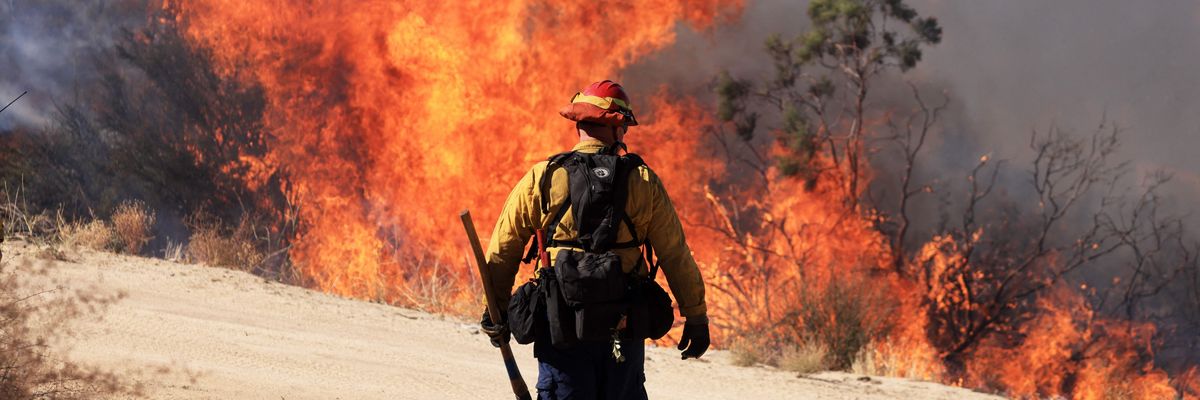New findings about the rising frequency of extreme wildfires have "the fingerprints of climate change" all over them, according to an Australian scientist who led a study published on Monday.
Calum Cunningham, a postdoctoral researcher at the University of Tasmania in Australia, told The Washington Post that he was driven to examine current trends in the frequency of wildfires after climate deniers suggested that because the global area being burned in blazes is declining, the idea of a growing wildfire crisis is being overblown by concerned scientists.
While the area destroyed by wildfires is indeed on the decline, analyses that include all fires—the majority of which are small and cause relatively little damage—obscured how the most extreme and destructive wildfires are rapidly growing more frequent.
Cunningham and his team analyzed data from National Aeronautics and Space Administration satellites, collecting four images of wildfires around the world per day over 21 years. They used the images to identify the 0.01% most extreme wildfires—those that release the most smoke and greenhouse gas emissions due to their size and uncontrollable nature.
Out of 30 million fires across the world over two decades, the researchers identified the 2,913 most extreme fire events and found that the frequency and intensity of such wildfires has more than doubled since 2003.
"Climate change is making fire weather more extreme and more frequent in a lot of the world."
The problem is rapidly getting worse, the team found: The six years with the most extreme wildfires had all occurred since 2017.
Trends were particularly troubling in particular regions, like temperate conifer forests in the western United States and the Mediterranean, where the number of extreme fires rose by more than 10 times in 20 years.
In boreal forests in places like northern Europe and Canada, the frequency of the most intense and hard-to-control blazes increased by seven times.
"It's absolutely in keeping with what climate change is doing to fire weather around the world," Cunningham told the Post. "Climate change is making fire weather more extreme and more frequent in a lot of the world."
The "fire weather" that's driven the increase includes hotter and drier conditions, with temperatures staying high even overnight when they ordinarily would have have dropped in previous decades, giving firefighters a chance to make headway in putting out blazes.
"Rarely did we have 100,000-acre fires 20 years ago," veteran firefighter Bobbie Scopa told the Post. "But now, it's not uncommon."
The researchers pointed to a "scary" feedback loop created as extreme wildfires create carbon emissions—leading to more planetary heating and even more fires.
"Climate change is not something off in the future," Cunningham told the Post. "It's happening before our very eyes. This is the manifestation of the reshaping of the climate we are doing."
The study was published in Nature Ecology & Evolution days after wildfires scorched more than 14,000 acres in Southern California and more than 24,000 acres in New Mexico, where two people were killed. Last year, climate scientists were stunned by an unprecedented wildfire season in relatively damp Eastern Canada, where wildfires were made twice as likely by the climate emergency according to the World Weather Attribution.
Climate scientist and author Bill McGuire called the findings "terrifying, of course, but just not a surprise," considering governments in the countries that produce the most fossil fuels are continuing to support and subsidize energy sources that heat the planet.
"This is certifiably insane," McGuire said.



